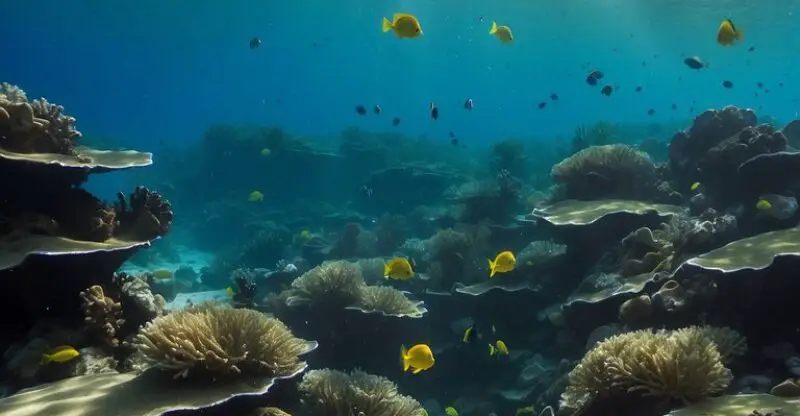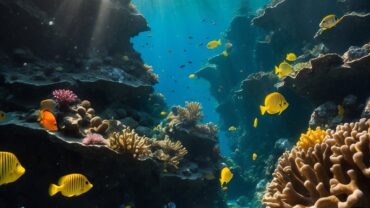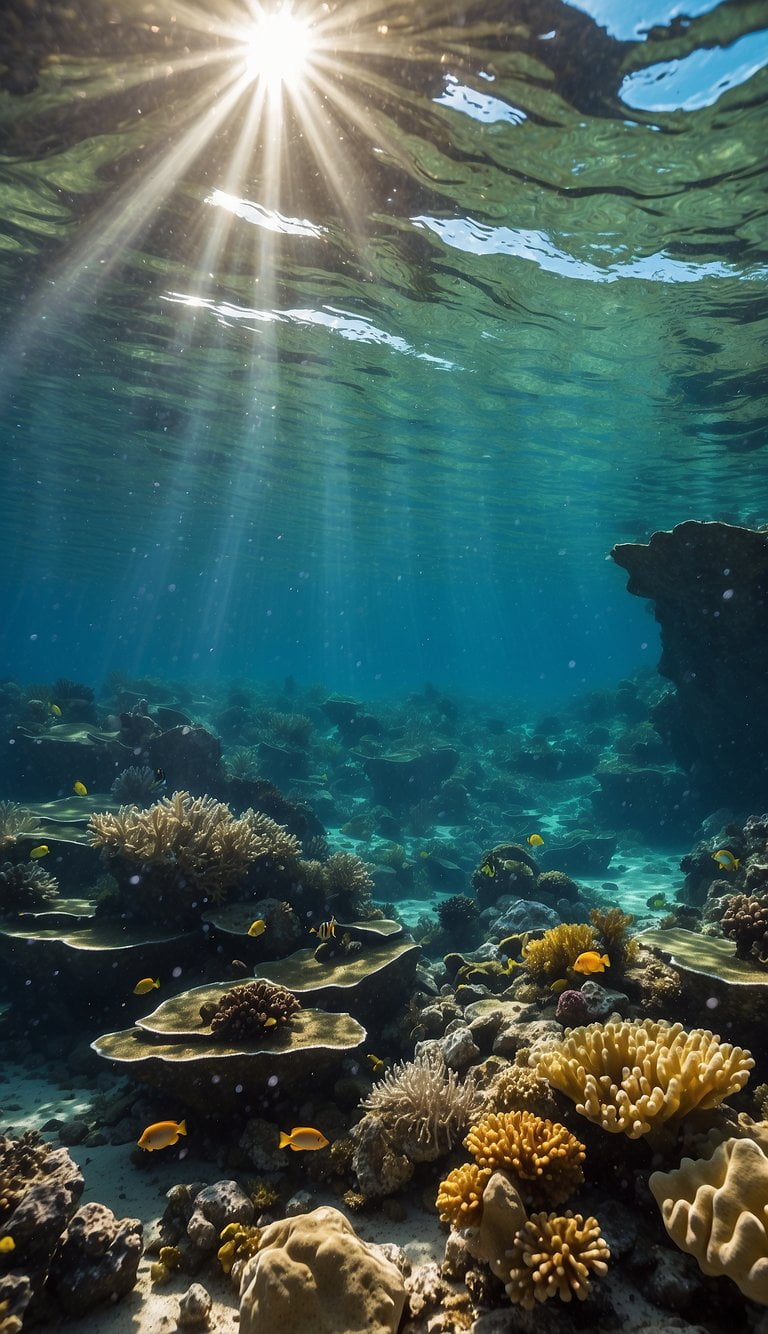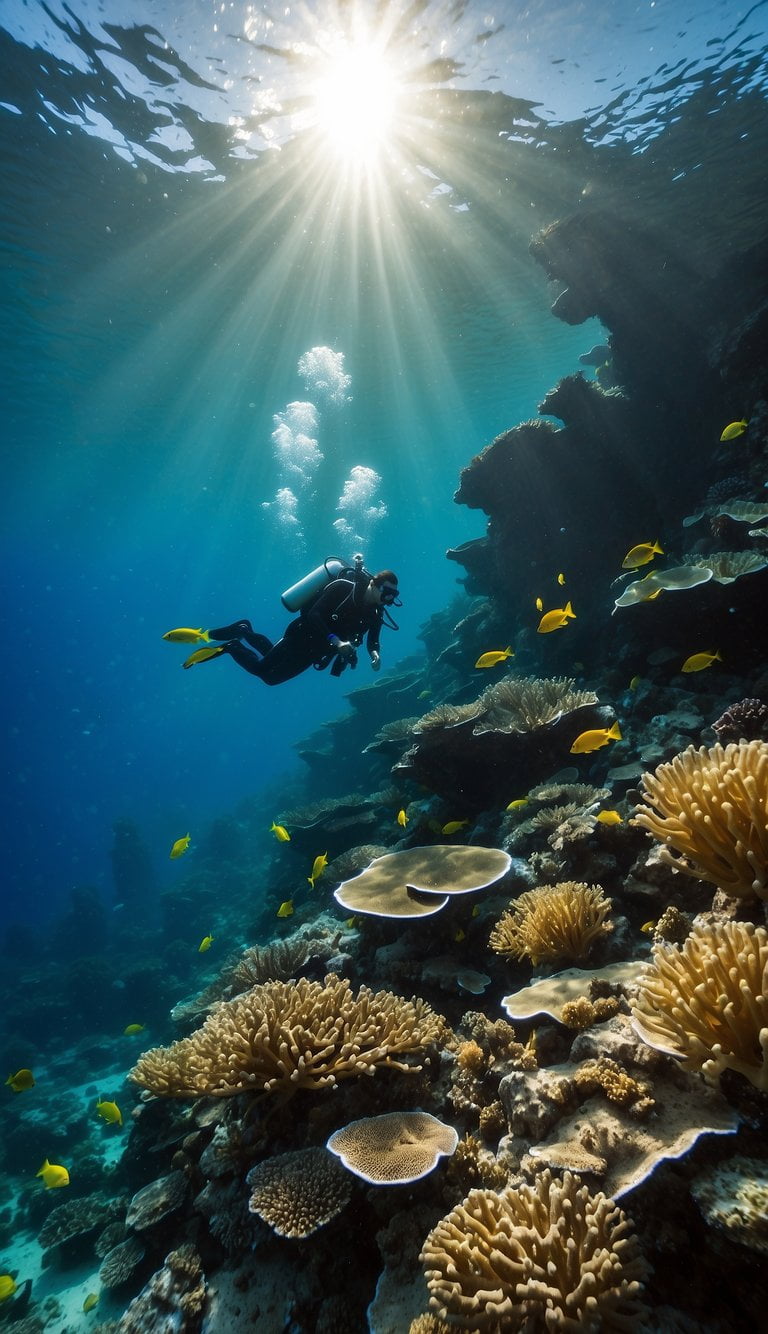Best Scuba Diving in French Polynesia: Top Dive Spots to Explore
Imagine diving into the warm, crystal-clear waters of French Polynesia, where visibility extends up to 100 feet, revealing stunning coral reefs and an abundance of marine life. French Polynesia offers some of the best scuba diving experiences in the world, catering to both beginners and seasoned divers. Whether you’re exploring wrecks or swimming alongside sharks, every dive here is an unforgettable adventure.

For those looking to embark on their first dive, French Polynesia’s numerous dive centers across 11 islands provide comprehensive services. Moorea is famous for its shark dives, offering encounters with reef and lemon sharks, while Bora Bora boasts a breathtaking lagoon where manta rays glide effortlessly. These locations not only offer spectacular dives but also the chance to explore the vibrant culture and natural beauty of the islands.
Advanced divers will find paradise in destinations like Rangiroa Atoll and Fakarava Atoll. Rangiroa’s vast lagoon is an aquatic wonderland teeming with diverse marine species. Fakarava’s channels present thrilling drift dives that leave a lasting impression. With so many exceptional dive sites, divers of all levels can find their perfect underwater haven in French Polynesia.
Key Takeaways
- French Polynesia is renowned for its exceptional scuba diving experiences.
- Dive sites range from beginner-friendly to advanced, featuring a variety of marine life.
- The islands offer both stunning dives and rich cultural experiences.
Overview of Scuba Diving in French Polynesia
French Polynesia is a sought-after destination for scuba diving enthusiasts. Its stunning underwater scenery, warm water temperatures, and abundant marine life create an ideal environment for both beginners and experienced divers.
Diverse Marine Life
French Polynesia boasts an impressive array of marine life. Divers can spot reef sharks, lemon sharks, and manta rays. Locations such as Bora Bora and Moorea provide excellent opportunities to encounter these creatures up close. Coral reefs encircle many of the islands, teeming with colorful fish, sea turtles, and other marine life. Specific sites like Tiputa Pass in Rangiroa promise exciting experiences with dolphins playing in currents and sharks patrolling the depths.
Visibility and Water Conditions
The water conditions in French Polynesia are nearly perfect for diving. Water temperatures typically stay above 80 degrees Fahrenheit, making dives comfortable year-round. Visibility often exceeds 100 feet, offering clear views of the vibrant underwater world. The Society Islands and the Tuamotus are notable for their excellent diving conditions, with many dive centers spread throughout these areas. The Te Moana Diving Pass is a great option for divers looking to explore multiple sites.
Diving Through the Seasons
Diving in French Polynesia can be enjoyed throughout the year. The region’s tropical climate means minimal seasonal variation in water temperature. However, the peak season typically runs from April to November, when the weather is dry and visibility is at its best. During this time, the seas are calmer, providing ideal conditions for dives. In the summer months, divers might experience slightly stronger currents but still enjoy good visibility and warm water.
Iconic Dive Sites in French Polynesia
French Polynesia is renowned for its breathtaking dive sites, each offering unique marine life and underwater landscapes. Key locations include the vibrant reefs of Bora Bora, the rich ecosystems of Fakarava, the captivating Tiputa Pass in Rangiroa, and the diverse marine life around Tikehau.
Bora Bora’s Lagoon
Bora Bora’s lagoon is a haven for diverse marine life. Known for its clear blue waters, the lagoon is home to many shark species. The dive site called Tapu is particularly famous. Here, divers can witness a variety of sharks, including lemon and blacktip reef sharks.
Tip: The best time to dive is during the morning when visibility is at its best.
The lagoon’s gentle currents make it suitable for divers of all levels.
Fakarava’s South Pass
Fakarava’s South Pass, also known as Tumakohua Pass, is teeming with life. This site is particularly famous for its large shark population. Divers can expect to see grey reef sharks, hammerheads, and sometimes even tiger sharks.
The strong currents in this pass attract a range of other species, including manta rays and dolphins. Important: The best time to dive is during slack tide when the currents are calmer. This makes it easier to enjoy the abundance of marine life without being swept away.
Rangiroa’s Tiputa Pass
Unique Feature: The sensation of flying through the water. The strong currents at Tiputa Pass create a drift dive experience. As divers drift along, they can see a plethora of marine life including dolphins, sharks, and rays.
This dive site in Rangiroa is particularly known for its dolphin encounters. Divers often find themselves surrounded by playful dolphins that come very close, making for an unforgettable dive experience.
Tikehau’s Rich Ecosystem
Tikehau is praised for its vibrant underwater ecosystem. The island’s pink sand beaches give way to a diverse underwater world. Divers here can expect to see large schools of fish, including barracudas and tuna.
The nutrient-rich waters around Tikehau attract manta rays and eagle rays, offering stunning underwater visuals. Tip: Diving near the atoll’s channel increases chances of spotting these majestic creatures. The calm lagoon also makes for pleasant, easy dives suited for all levels.
Wildlife Encounters
French Polynesia is famous for its rich marine life. Divers can expect to see an array of species, from majestic reef sharks to playful dolphins and vibrant tropical fish.
Sharks and Rays
Diving spots like Tiputa Pass offer encounters with reef sharks, lemon sharks, and tiger sharks. Divers often see manta rays gliding gracefully through the water.
Sharks patrol the depths, making for thrilling dives while rays, including stingrays, can be seen closer to the reefs. The most exciting aspect is how approachable these creatures can be, allowing for up-close experiences.
Whales and Dolphins
During the diving season, whales and dolphins are common sights. Tiputa Pass, for instance, is a popular spot to see spinner dolphins play in the currents.
Humpback whales are often seen during their migration period, creating a breathtaking experience for divers. Pods of dolphins are seen year-round, and their acrobatics bring added excitement to dives.
Reef Dwellers and Pelagic Fish
The reefs are teeming with tropical fish like parrotfish, as well as larger pelagic species. Tuna and barracuda are frequently found in deeper waters, often near drop-offs.
Coral reefs host an array of marine life, including colorful fish, sea turtles, and eagle rays. These areas offer incredible biodiversity, making each dive a unique experience. The visibility here is often excellent, reaching up to 100 feet, allowing for the best views of this vibrant underwater world.
Diving Experiences for Every Level
French Polynesia offers a range of diving experiences for both novice and experienced divers. From beginner-friendly spots with calm waters to advanced drift dives and exceptional liveaboard and resort options, there’s something for everyone.
Beginner-Friendly Spots
For new scuba divers, French Polynesia has many inviting spots. Bora Bora and Moorea are excellent places for beginners. These locations boast warm, clear waters and abundant marine life like reef fish and rays. The coral gardens in Bora Bora have shallow areas perfect for beginners to explore comfortably. Moorea’s lagoon also provides serene dives with the chance to see reef sharks and lemon sharks in a controlled environment. Dive centers in these areas often offer introductory courses, ensuring that novice divers have a safe and enjoyable experience. These beginner-friendly sites are ideal for getting acquainted with the thrill of scuba diving.
Advanced Drift Diving Adventures
Experienced divers seeking more challenge will find Rangiroa and Fakarava exciting destinations. Tiputa Pass in Rangiroa is famous for its thrilling drift dives. As divers drift through the pass, they encounter dolphins, sharks, and manta rays. Fakarava’s Garuae Pass, the largest pass in French Polynesia, offers strong currents that attract a variety of marine life, including large schools of fish and reef sharks. These locations demand advanced skills due to their strong currents and depth, promising an exhilarating experience for seasoned divers.
Livaboard and Dive Resort Options
French Polynesia provides outstanding liveaboard and dive resort options for divers who prefer extended stays. Liveaboards allow divers to explore remote sites and multiple islands, including the Tuamotus and Society Islands, on a single trip. This option offers the convenience of diving directly from the boat, maximizing underwater time. Dive resorts such as those found on Moorea and Bora Bora offer luxurious accommodations and direct access to top dive sites. Top Dive is a prominent scuba diving operator in the region, with multiple centers across key islands. These options cater to divers looking for both comfort and easy access to some of the world’s best dive spots.
Conservation Efforts in French Polynesia
French Polynesia showcases strong efforts in marine life conservation and sustainable tourism, helping to protect its rich natural ecosystem and unique local culture.
Protecting the Natural Ecosystem
French Polynesia actively works to protect its waters and marine life. One key initiative is the establishment of marine protected areas, including designated zones within the UNESCO Biosphere Reserve. These areas offer safe havens for diverse species like sharks, manta rays, and various coral species.
Local organizations help monitor and manage these conservation efforts. They conduct research, track species populations, and restrict activities that may harm the ecosystem. Efforts also include public education to raise awareness about the importance of protecting marine habitats.
Sustainable Tourism Practices
Sustainable tourism is a crucial aspect of French Polynesia’s conservation strategy. Dive operators and tourism businesses follow guidelines to ensure minimal impact on the environment. This includes limiting the number of divers per site and encouraging eco-friendly practices among visitors.
Local resorts and tour companies often collaborate with conservation groups to promote sustainability. Tourists are educated about local culture and the need to protect the natural environment. This includes participating in beach clean-ups and respecting wildlife habitats.
These practices aim to balance tourism with conservation, ensuring that both the environment and local communities thrive.
Planning Your Dive Trip
When planning a dive trip to French Polynesia, timing, travel logistics, and understanding diving conditions are key. Plan your trip carefully to maximize the experience and ensure safety.
Best Times to Visit
The best time to visit French Polynesia for diving is during the dry season, which runs from May to October. This period offers calm seas and better visibility, making it ideal for exploring the vibrant atolls and reefs.
The rainy season, from November to April, sees more significant rainfall, which can affect water clarity. However, it’s also a time when fewer tourists are around, so you might find more availability at resorts. Water temperatures remain warm year-round, averaging between 77°F and 84°F, making it comfortable for diving anytime.
Travel and Accommodation
Travelling to French Polynesia often involves flying into Faa’a International Airport in Tahiti. From there, domestic flights or boat transfers can take you to other islands in the Society Islands or the Tuamotu Archipelago.
Accommodation ranges from budget guesthouses to luxury resorts, with many dive operators affiliated with major hotels. For a seamless experience, staying at a resort with an in-house dive shop, like some of the resorts in Bora Bora and Moorea, can be convenient.
Luxury resorts offer packages that include diving trips, which may be a good option for first-timers. Booking in advance, especially during peak seasons, ensures better rates and availability.
Diving Conditions and Safety
Diving conditions in French Polynesia are generally favorable, with excellent visibility often exceeding 100 feet. The current can vary significantly depending on the site, with some locations like Tiputa Pass in Rangiroa known for strong currents that can provide thrilling drift dives.
Safety is paramount when diving, so choosing a reputable dive operator is essential. Many dive shops are PADI certified and offer courses for beginners and advanced divers. It is also advisable to carry dive insurance and ensure all your gear is checked and in good condition before dives.
Understanding local marine life, such as sharks, rays, and tropical fish, adds to the safety and enjoyment of the dive. Always follow the guidelines provided by the dive guides to ensure a safe and memorable experience.
Additional Attractions and Activities
Beyond the rich underwater landscapes, French Polynesia offers a wealth of adventures and cultural experiences. Visitors can explore lush islands, historical sites, and immerse themselves in local traditions.
Non-Diving Adventures
French Polynesia’s islands provide numerous non-diving adventures. Snorkeling in the crystal-clear waters around Moorea and Huahine reveals colorful coral reefs and diverse marine life. Hiking trails on Tahiti offer breathtaking views of volcanic mountains and lush forests.
Trips to Tetiaroa, a private atoll once owned by Marlon Brando, offer guided tours showcasing pristine beaches and bird sanctuaries.
For those interested in history, Huahine’s ancient temples and archaeological sites provide a glimpse into the region’s past.
Taking a ferry between islands is a scenic way to travel, offering stunning views of the South Pacific Ocean.
Cultural Explorations
Cultural explorations in French Polynesia are equally enriching. Papeete, the capital of Tahiti, is a center for local markets, where visitors can buy traditional crafts, clothing, and food.
The island of Hiva Oa, famous for its stone tikis and serving as the final resting place of artist Paul Gauguin, offers an artistic and historical journey.
Traditional dance performances and music are integral to Polynesian culture, often showcased in evening events across the islands.
Additionally, visiting local villages provides a deeper understanding of Polynesian lifestyle and customs, allowing travelers to connect with the community.
Overall, French Polynesia’s blend of natural beauty and cultural heritage makes it a unique destination beyond its world-renowned scuba diving spots.
Frequently Asked Questions
French Polynesia is a top destination for scuba diving. With numerous dive sites, varying conditions across islands, and remarkable underwater life, this guide addresses common questions for both beginner and advanced divers.
What are the top dive resorts in French Polynesia for underwater enthusiasts?
Some top dive resorts include the Four Seasons Resort in Bora Bora and the Brando in Tetiaroa. Both offer luxurious amenities and access to fantastic diving sites.
How do the diving conditions in Rangiroa compare to other dive sites in French Polynesia?
Rangiroa Atoll is known for its large lagoon and diverse marine life. It stands out for its clear waters and abundant underwater wildlife compared to other sites like Moorea and Bora Bora. Rangiroa is especially famous for encounters with dolphins, manta rays, and sharks.
Can you recommend some Tahiti scuba diving packages suitable for beginners and advanced divers?
The Te Moana Diving Pass is a good option, offering packages for multiple dives at various sites, including options for both beginners and advanced divers. Top Dive also provides comprehensive packages that cater to different skill levels, making it easy to explore the best spots in Tahiti.
What are the most recommended months for experiencing optimal scuba diving conditions in French Polynesia?
The best months are generally from May to October. This period offers excellent visibility and calm waters, making it ideal for diving. The weather is also more predictable, reducing the risk of cancellations due to rough seas.
What should one expect from a liveaboard diving experience in French Polynesia?
A liveaboard experience in French Polynesia allows divers to explore multiple remote dive sites in one trip. Expect to stay on a boat equipped with diving facilities and accommodations. It’s ideal for those looking to maximize their dive time and see diverse marine environments.
Are there any specific sites in French Polynesia that are considered a must-visit for scuba divers?
The Tiputa Pass in Rangiroa and the lagoon in Bora Bora are must-visit sites. Tiputa Pass is known for its drift diving and encounters with sharks, while Bora Bora’s lagoon offers vibrant coral reefs and a chance to see manta rays up close.









